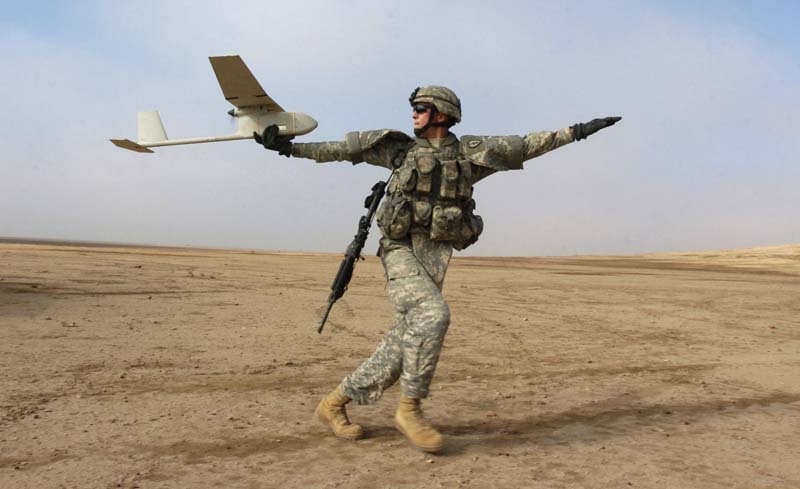Strategy Page discusses the Raven UAV, which has become a very popular tool with US troops in Afghanistan:
Just as the first recon aircraft a century ago changed the way armies fought, the micro-UAVs have changed the way small units of soldiers fight. A century ago the aerial observers reported to generals and their staffs. UAV video goes to platoon or company commanders, or the leader of a small Special Forces team.
The lightweight, hand launched Raven UAV can only stay airborne about an hour per sortie, but troops have found that this is enough time to do all sorts of useful work, even when there’s no fighting going on. This is most of the time.
[. . .]
The current model, the Raven B (RQ-11B), was introduced five years ago, a year after the original Raven entered service in large numbers. This UAV is inexpensive ($35,000 each) and can stay in the air for 80 minutes at a time. The Raven is battery powered (and largely silent unless flown close to the ground). It carries a color day vidcam, or a two color infrared night camera. It can also carry a laser designator. Both cameras broadcast real time video back to the operator, who controls the Raven via a handheld controller, which uses a hood to shield the display from direct sunlight (thus allowing the operator to clearly see what is down there). The Raven can go as fast as 90 kilometers an hour, but usually cruises at between 40 and 50. It can go as far as 15 kilometers from its controller, and usually flies a preprogrammed route, using GPS for navigation.
The Raven is made of Kevlar, the same material used in helmets and protective vests. On average, Raven can survive about 200 landings before it breaks something. While some Ravens have been shot down, the most common cause of loss is losing the communications link (as the aircraft flies out of range) or a software/hardware failure on the aircraft. Combat losses have been high, as nearly 20,000 have been built and most of those have been lost in training or the battlefield.
From the very beginning, the Raven changed the way troops fight. With the bird’s eye view of the battlefield, commanders can move their troops more quickly, confident that they won’t be ambushed, and often with certain knowledge of where the unseen enemy is. The big advantage with Raven is that it’s simple, reliable, and it just works. A complete system (controller, spare parts and three UAVs) costs $250,000. The UAV can be quickly taken apart and put into a backpack. It takes off by having the operator start the motor, and then throwing it. This can be done from a moving vehicle, and the Raven is a popular recon tool for convoys. It lands by coming in low and then turning the motor off. Special Forces troops like to use it at night, because the enemy can’t see it, and often can’t hear it either.
 A soldier with the 25th Infantry Division prepares to launch a Raven unmanned aerial vehicle in Paktika province, Iraq.
A soldier with the 25th Infantry Division prepares to launch a Raven unmanned aerial vehicle in Paktika province, Iraq.
(Photo by Sgt. 1st Class Michael Guillory / Army)




It won’t be too much longer until a squad or fire-team has their own UAV to look ahead 1000 meters.
Unclip, test the video, toss it, watch your iPod.
Amazing stuff.
Comment by Brian Dunbar — January 19, 2012 @ 12:43